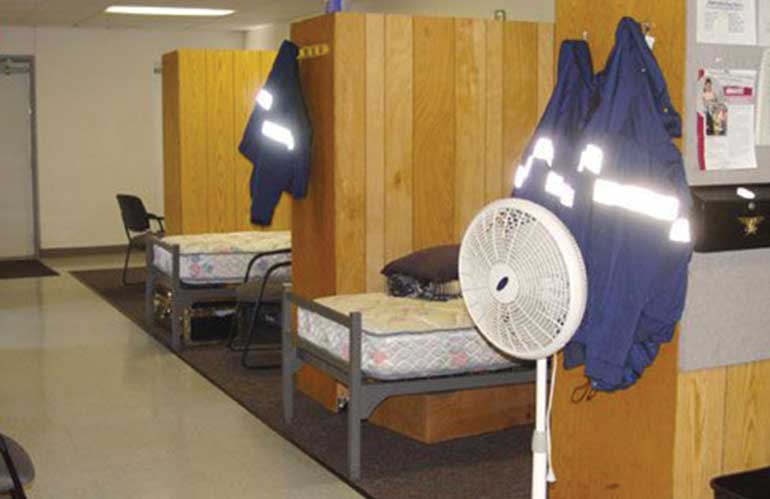- by PURVIS
- March 1, 2018,
- 0 Comments
Reducing Firefighter Stress Levels
Occupational stress is inherent in firefighting and emergency response. But at no time in the history of the American fire service has this been more acute—as the increase in arson, acts of domestic violence, terrorist acts, automobile accidents, airplane crashes, hurricanes, tornadoes and earthquakes will attest. The rigors of firefighting, rescue and victim extrication are such that only the bravest among us need apply.
Other stresses on firefighters are more subtle, such as the effect of receiving alerts in the fire station – especially at night. Interrupted sleep, startling alarms and bright lights take their toll immediately as heart rates soar in response to alerts and again later with the onset of fatigue due to sleep deprivation.
“Heart attacks or stroke were responsible for 49% of firefighter deaths in 2012. This single year total is a near average proportion of firefighter deaths from heart attack or stroke over recent years. This nature of fatal injury has remained relatively constant, while others, on average, have been reduced during the past decade.” – U.S. Fire Administration (USFA) Spring 2013
A Fire Station Alerting System can help mitigate firefighter stress within the station. Aspects of a system that minimizes these stressors include:
- Customizable day/night settings control audio zones, lighting, devices such as outdoor speakers and ambient noise level sensors.
- Ramped audio levels awaken firefighters without the acute stress that abrupt ear-piercing tones can produce.
- Low intensity lights illuminate dorms, bunk rooms and exit corridors so that sleepy first responders don’t lose precious seconds adjusting to bright lights and can safely navigate the egress while preserving their night vision.
- Ambient noise level sensors detect ambient background noise and automatically adjust volume levels accordingly to ensure critical audio alerts are heard, especially in noisy areas such as drive bays.
- Zone-specific notification provides custom tones and announcements, colored light indicators and appropriate speaker activation – by unit/incident, individual bunk or personal space, or all – so first responders not needed for a call can continue sleeping, while those required can begin responding immediately.
- Automated controls open and close doors, display apparatus status, turn off appliances, control egress lighting, open bay doors and activate traffic signals, letting responding individuals concentrate on the incident.
